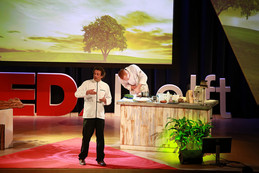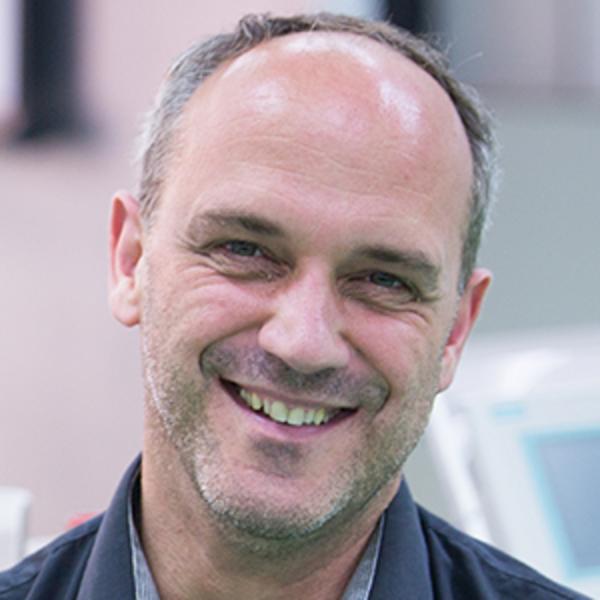
The TEDxDelft theme for 2015 is Let’s Make Things Beta and it’s all about co-creation, crowdsourcing and creating unfinished things. Our focus is to encourage the community of scientists, designers and thinkers that are the hallmark of Delft to be motivated and proactive about following through on great ideas.
Speakers
Speakers may not be confirmed. Check event website for more information.
Delft Brass
Playing everything from Classical to Swing or Ceremonial to Blues, Delft Brass is a young, enthusiastic seven-piece brass ensemble from Delft with a great passion for music. The ensemble was formed in 2013 when tuba player Brenda Hooiveld and her close brass playing friends at the Koninklijke Harmoniekapel Delft (Royal Wind Orchestra Delft) decided to form a new group because, according to Hooiveld, “brass are the nicest instruments.”Drum Cafe
Drum Cafe has been whipping up audiences all over the world since 1996, during conferences, but also at corporate events. According to Drum Cafe, drumming is the most effective team building activity. That may just be true. Drumming seems to be hardwired in our systems. Melodies and songs can evoke all kinds of emotions, but drums go straight to the heart and make you want to move along.Alec Momont
Use technology for the greater good of mankind. That’s the rule product designer Alec Momont lives by. Momont recently made international headlines for his defibrillator-fitted ambulance drones that can substantially increase the chances of a person’s survival after a cardiac arrest. The design was made as part of Momont’s thesis project during his MSc at TU Delft. He scored a perfect 10 for it.Andy Zaidman
Zaiman’s interest in software started with his fascination for computers as a teenager. “It seemed only logical for me to study computer science. In the course of actually studying the subject, I realized how complex it was. I feel it’s strange that we haven’t found a way to make the process of testing complex programs more interesting.” As part of his talk, he will explore examples of high profile projects that went wrong due to software bugs.Edward Valstar
With an MSc in mechanical engineering and a PhD in the imaging of orthopaedic implants, Valstar’s expertise lies in marrying engineering and medicine. “Orthopaedic surgery is the surgical application of carpentry, as it were. That is why I get along so well with orthopaedic surgeons. I’m not sure pharmaceuticals would have been my thing.” Back in the day, his graduation project involved the validation of a muscle and skeletal model of the shoulder. As the years passed, his interest moved to include the hip and the knee and other places where artificial joints can be implanted.Elisa Giaccardi
It’s a bizarre idea but maybe one day, objects will be able to design objects. That’s the sincere belief of Elisa Giaccardi. Currently, design and manufacturing processes are centred around factors such as cost-effectiveness and optimal design – so is that wrong? “No,” says Giaccardi, “it’s just that these days, there are more opportunities to design products that are more radically innovative.”Gerardo Soto y Koelemeijer
“Math is an important element of human culture,” says Dr. Gerardo Soto y Koelemeijer. Culture and math may sound like a collision of worlds, but Koelemeijer believes they complement each other. Soto y Koelemeijer believes that his work as a mathematician and as a novelist has differences and similarities but people often focus only on the differences. “The focus on language and logic is a similarity and in both disciplines structure and beauty is very important. An elegant mathematical proof can be considered as a poem. Furthermore, creativity is in both cases a keyword.”Hilda Ruijs
Being born in a musical family, it is no wonder that Hilda Ruijs started playing musical instruments at a young age. Her musical skills range from playing the violin, guitar and piano, to singing classical music and composing her own songs. When asked about how best to balance science and creativity, both in her studies and in her passion for music, Ruiijs has this to say: “Whenever one considers creativity to be important, I believe that you can bring that into everything that you are doing and will actually benefit from it. It is very much about channeling the creativity into different fields.”Jojanneke van den Bosch
A person’s childhood is as fragile as it is precious. Everyday, millions of children around the world are forced to deal with the realities of life, thrown into situations they neither asked for nor deserve. In most societies, these children often remain invisible, while the issues they face are considerably neglected. For Dutch social activist, author and online strategist Jojanneke van den Bosch, raising awareness of the plight of this group of children has become a personal calling, especially since their life-altering experiences are similar to her own.Kor van Velzen
“When I was a boy, I was sure I wanted to be an actor. And I wanted to be a writer, a painter, or a famous singer, ” says Kor van Velzen. But then the Sixties came and along and with it, Saints Paul, John, George, and Ringo. A priest cannot be rebellious and so van Velzen embraced the change that had become apparent in society. Since his days as a priest, Van Velzen has worn many other hats: artist, advisor and songwriter. In fact, creativity is no stranger to the Van Velzen household, as he is the father of well known Dutch singer-songwriter Roel van Velzen.Mileha Soneji
“While studying product design in India, we had a course called Design For Special Needs. It was the first time I realized how challenging it is to design for people with special needs. Around that time an uncle that I was very close to was suffering from Parkinson’s Disease. I really wanted to do something to help him,” said Soneji. Spending time with her uncle and observing the difficulties he faced in his daily tasks led to her idea. “At the end of the day, I believe that having empathy and being able to put yourself in another person’s shoes is what makes a great design.”Patrick Rensen
As a Professor of Endocrinology at Leiden University Medical Center, Rensen studies the role of sugar and fat metabolism in diabetes and heart disease. In particular, Rensen is investigating something called ‘brown fat’ which is different from the all too familiar ‘white fat’ that tends to collect around our middles. “We know that babies are born with brown fat,” says Rensen, “but we thought it disappeared after a few years...”Peter Mooij
In an online profile, Peter Mooij says he has millions of algae as pets. His favorite color is algae green and he believes that understanding algae might just be the answer to everything. As environmental biotechnology researcher at TU Delft, Mooij has been studying the phenomena of algae for quite a while. In 2013, he wrote about how algae can be ‘interesting candidates for the large-scale production of biodiesel’.Puck Meerburg
“Hello world! This year I celebrate my tenth anniversary as a programmer.” That is how Puck Meerburg greets the audience. Meerburg is clearly a digital native. He was developing iPhone apps at the age of ten, and already has fifteen apps to his name. Now, at fifteen, he has joined a team that is actually developing a whole new Operating System for Mac and PC. You can’t help but wonder what he will be doing in five or ten years time.Roeland Dietvorst
The human mind cannot be trusted. This is what many years of research have taught neuroscientist Roeland Dietvorst. With a background in biological and cognitive psychology and a PhD in Applied Neuroscience from Erasmus University Rotterdam, Dietvorst tries to better understand and predict how consumers respond to various marketing stimuli and products.Shou-En Zhu
There is a Chinese dream whereby education is the key to secure one’s brighter future. Shou-En Zhu was one of the millions of Chinese taking part in the rural-urban migration in order to receive this good education. Zhu understood the lack of development in graphene and with this insight, he managed to design and construct sophisticated graphene production equipment from scratch. When trying to reminisce about his ordeal, Zhu shared the influential teachings of a former chairman of the Department of Material Science in Jilin University that kept him going: “If all of the people in this new field are sprouts, you have to grow a little bit taller than the rest, to get more sun and to grow into a large tree.”Suzanne Ma
Born and raised in Holland, Kuo’s ancestral hometown is in eastern China. “For me, as a Chinese-Canadian, I was fascinated to learn about the migration route from China to Europe. It’s a story I hadn’t heard before, and I wanted to know more.” She believes that policies and public opinion in the Netherlands are among the most progressive here. “I think the Chinese community, especially that of my husband’s generation, is well integrated and generally the Dutch are quite accepting of the Chinese communities in their midst. That said, I do see some signs of stagnation in terms of the way minorities view themselves in Holland and also the way in which they are treated by the general Dutch population.”Yuri Verbeek
Inspiration can be found in the most unlikely places. While most chefs turn to seasonal or unusual ingredients to devise a delectable dish, culinary creative Yuri Verbeek looks to his surroundings and everyday experiences to create extraordinary cuisine. As head chef and owner of Delft culinary studio De Kokkerie, Verbeek believes that simple things can lead to surprising dishes.Zarayda Groenhart
Television and radio presenter, talk show host, author, journalist, columnist and VJ; Zarayda Groenhart has done it all. With all this success, you would think that Groenhart’s life has been roses all the way, but you would be wrong. In 2013, when trying to write her first novel, she realised that the story should be about herself. For over ten years, Groenhart had been pushing away memories of a sexual assault that occurred when she was 20 years old. In her book Het Waarom Meisje (The Why Girl), she confronts those memories and comes to terms with them.Organizing team
-
Liesbeth Mantel
Project manager -
Toine Andernach
Coach coordinator -
Molly Quell
Online Media -
Jeroen van Erp
Curator -
Caryn ‘t Hart de Wijkerslooth
Curator -
Sylvia Walsarie Wolff
Speaker liaison -
Antoinette Wijffels
Stage direcctor -
Brenda Hooijveld
Volunteer coordinator -
Iris Kramer
Event Production -
Annelies Gras
Marketing & communication
